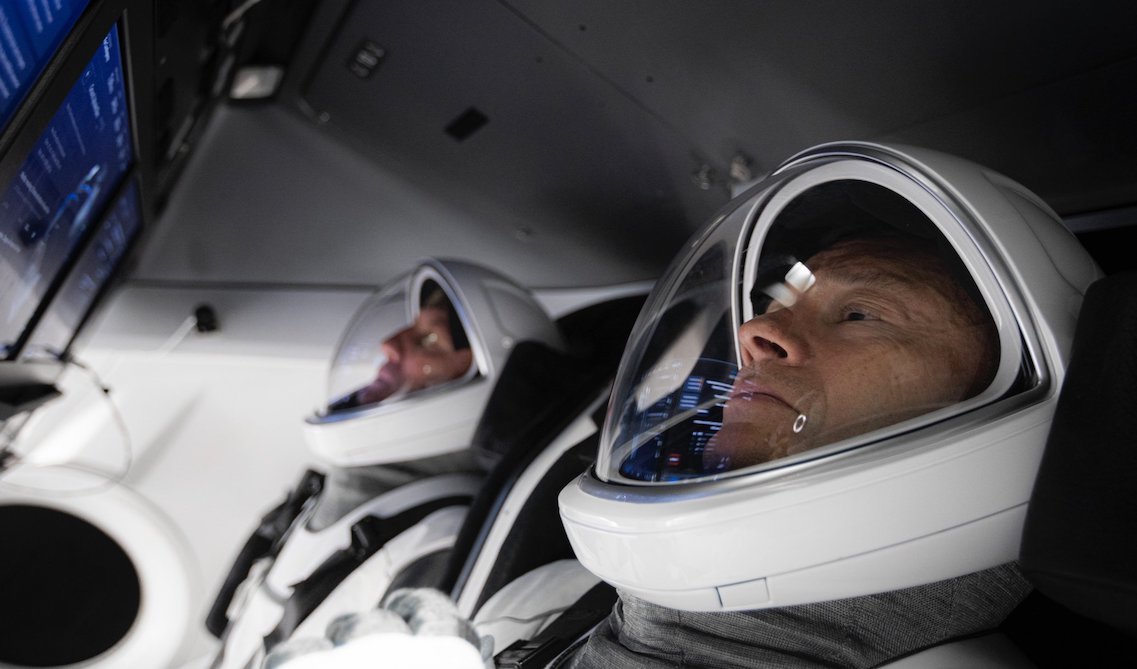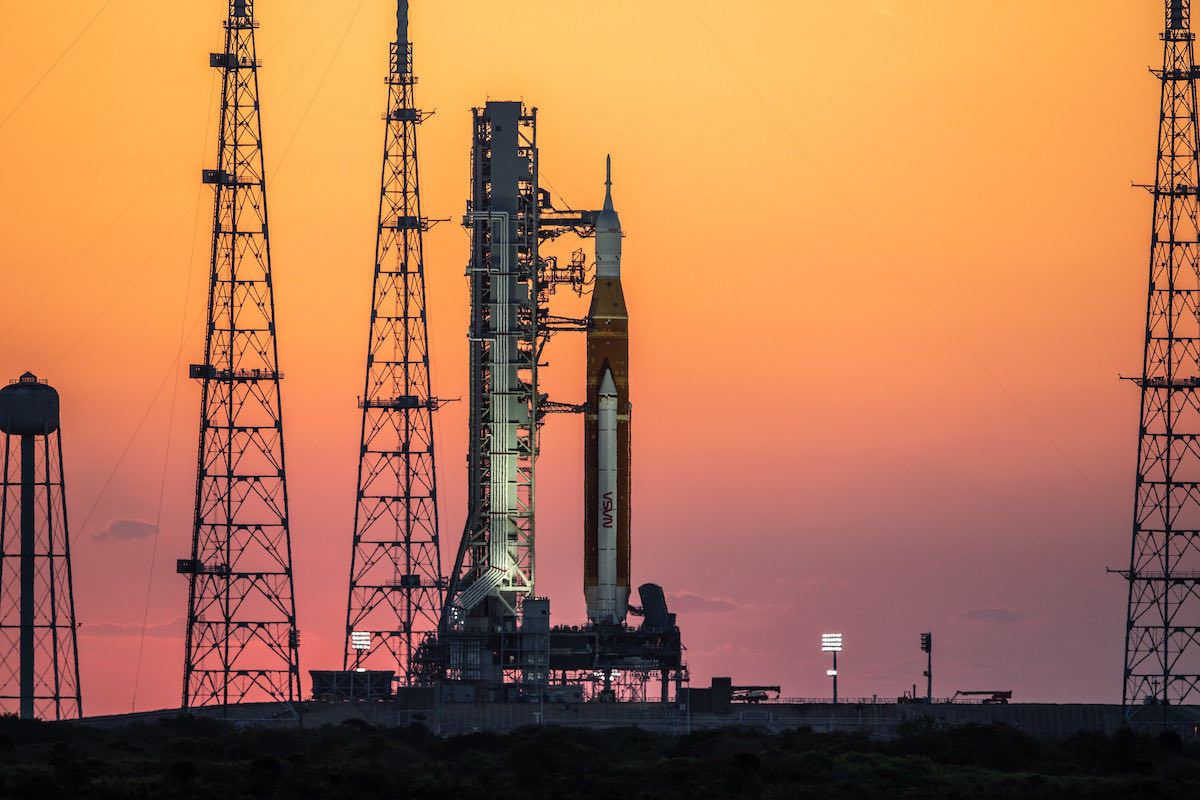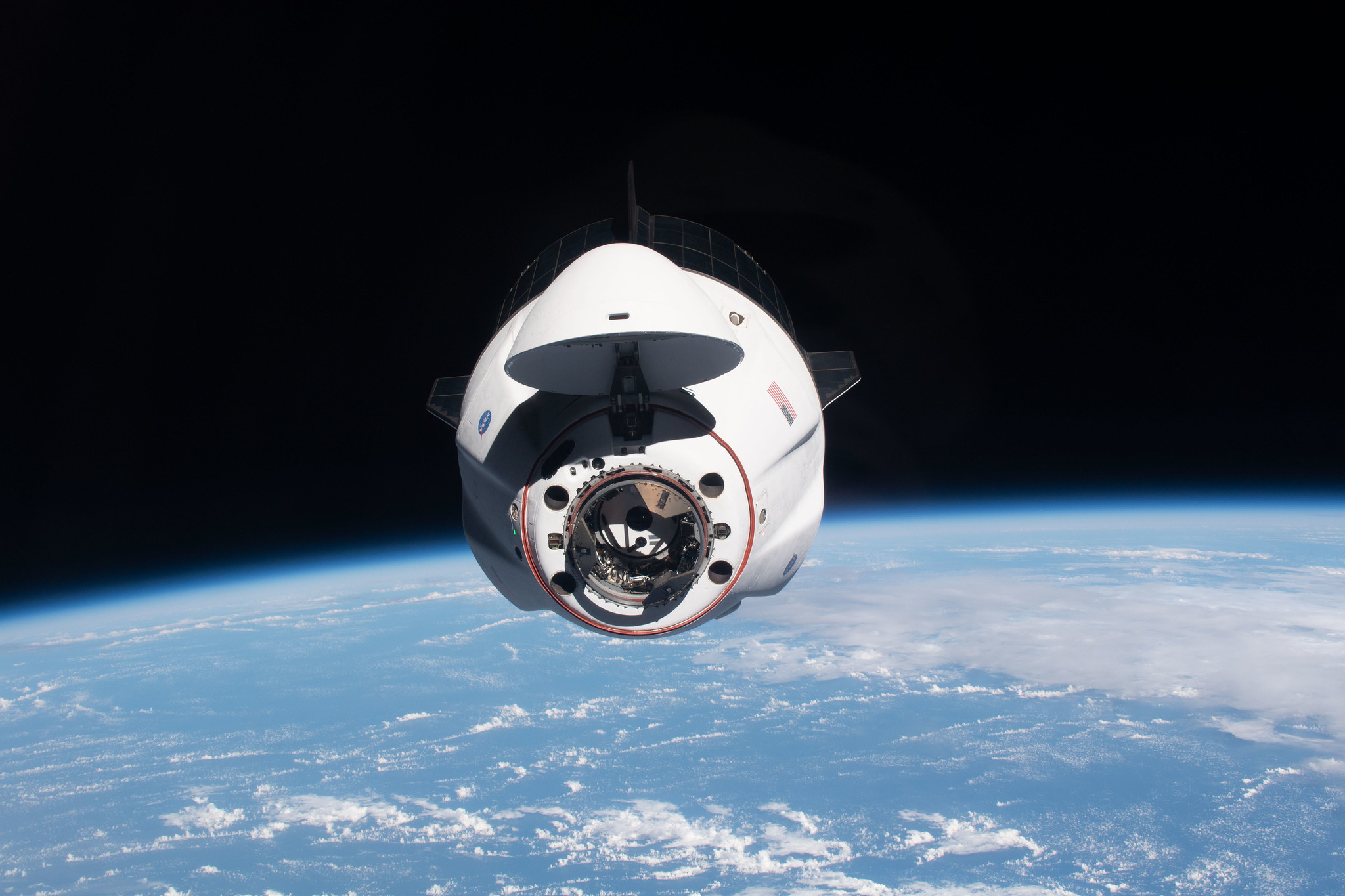
NASA officials gave the green light Friday for the first all-commercial astronaut launch to the International Space Station on a SpaceX rocket as soon as April 3. But the astronaut launch could be delayed a day, or longer, to give priority to a countdown test for NASA’s Space Launch System moon rocket on a neighboring launch pad at the Kennedy Space Center.
At the end of a flight readiness review Friday, officials from NASA, SpaceX, and Axiom Space — the company managing the commercial astronaut flight to the space station — formally signed off on proceeding with the launch of four private citizens aboard a Falcon 9 rocket and Crew Dragon spaceship.
The launch is set for next Sunday, April 3, at 1:13 p.m. EDT (1713 GMT) from pad 39A at the Kennedy Space Center, the same day NASA plans to load super-cold liquid hydrogen and liquid oxygen propellants into the Space Launch System rocket for a countdown dress rehearsal on pad 39B.
The dress rehearsal will allow NASA’s SLS launch team to run a mock countdown to the T-minus 10 second mark, just prior to the moment when the rocket’s four core stage engine would ignite during a real launch. The rocket is scheduled to launch on NASA’s Artemis 1 mission in June, according to Kathy Lueders, head of NASA’s space operations mission directorate.
The Artemis 1 test flight will send an Orion crew capsule around the moon, without any astronauts aboard, for a shakedown cruise expected to last several weeks. The Artemis 1 mission will pave the way for NASA’s Artemis 2 mission in 2024 on the second SLS/Orion flight, followed by landings on the surface of the moon later this decade.
Bill Gerstenmaier, SpaceX’s vice president of build and flight reliability, said preparations for the private astronaut launch — known as Axiom Mission 1, or Ax-1 — are continuing this weekend with loading of hydrazine and nitrogen tetroxide propellants for the maneuvering jets on the Crew Dragon Endeavour spacecraft.
“The crew is trained, the ground teams and hardware are ready, pending some final test completions,” Gerstenmaier said.
The Crew Dragon spacecraft will then be moved from its processing facility at Cape Canaveral Space Force Station to the SpaceX rocket hangar near pad 39A, where technicians will connect the capsule with its Falcon 9 launcher. The rocket will roll out to pad 39A next week for a test-firing of its Merlin main engines April 1.

The two launch pads at Kennedy Space Center, originally built for the Apollo moon program in the 1960s, are about 1.7 miles (2.7 kilometers) apart on the Florida coastline. But limitations in the supply of fluid commodities used on both launch pads mean NASA can’t support the SLS fueling test on pad 39B and a SpaceX launch from pad 39A on the same day.
The main constraint involves nitrogen gas used on both launch pads. Ground crews need time to replenish the nitrogen between the SLS fueling test and the Ax-1 launch, Lueders said.
Speaking with reporters Friday evening, Lueders said NASA’s priority is to accomplish the SLS dress rehearsal April 3, assuming ground teams at pad 39B stay on track with preparations for the fueling test, which NASA calls a “wet dress rehearsal.”
“Our plan is to get that done as early as possible,” Lueders said, referring to the SLS wet dress rehearsal.
SpaceX is aiming to have the Ax-1 mission ready for launch April 3, just in case the SLS dress rehearsal encounters a delay.
“They’re getting ready for their wet dress, but we, and Axiom, and the SpaceX team are also getting ready to launch as closely to April 3 as possible,” Lueders said.
If the Ax-1 mission is unable to launch April 3, SpaceX has backup opportunities at 12:50 p.m. EDT (1650 GMT) April 4 and at 12:27 p.m. EDT (1627 GMT) April 5.
“I do think getting the (SLS) wet dress done, and then allowing (Ax-1) a series of launch opportunities is the smart thing for us to do,” Lueders said. “It lets the Artemis team be able to go get that data and … get ready for what’s going to be a really historic launch in June.”
Lueders said teams initially thought they needed two days between the SLS dress rehearsal and the Ax-1 launch, but that could be cut to one day.
Once the SLS fueling test is complete, ground teams will drain the rocket and prepare to roll it back into the Vehicle Assembly Building for additional closeouts and tests. It will return to pad 39B about a week before the Artemis 1 mission’s target launch date, currently set for no earlier than June 6.
While the Artemis countdown rehearsal is NASA’s priority, there’s also some urgency in getting the Ax-1 mission off the ground. The Ax-1 mission will last about 10 days from launch through splashdown, slated to occur off the coast of Florida.
NASA and SpaceX require about two days between the undocking of the Ax-1 mission and the launch of the next Crew Dragon flight to the space station, currently scheduled for no earlier than April 19. That mission, known as Crew-4, will ferry the next four-person crew to the space station for an expedition scheduled to last about five months.
If Ax-1 gets off the ground by around April 7, the Crew-4 launch could remain on track for April 19. The Crew-4 astronauts will replace the four astronauts on the Crew-3 mission, who have been at the space station since November.
The Crew-3 astronauts are scheduled to leave the space station and return to Earth on April 26.

Commander Mike Lopez-Alegria, a retired NASA astronaut and now an Axiom employee, will command the Ax-1 mission. Three paying passengers, all customers of Axiom, will join Lopez-Alegria on the flight to the International Space Station. They will spend about eight days living on the orbiting research complex.
Space tourists have visited the station on Russian Soyuz missions, but those flights were commanded by a cosmonaut employed by Roscosmos, the Russian government’s space agency. The Ax-1 mission will be the first to the station with an all-commercial crew, and Axiom plans more crew missions in the coming years, culminating in the launch of the company’s own modules to the International Space Station.
Axiom is designing its own commercial space station that could be assembled in orbit in the late 2020s. Other companies have similar plans, all eyeing to replace the International Space Station after its retirement.
Email the author.
Follow Stephen Clark on Twitter: @StephenClark1.
